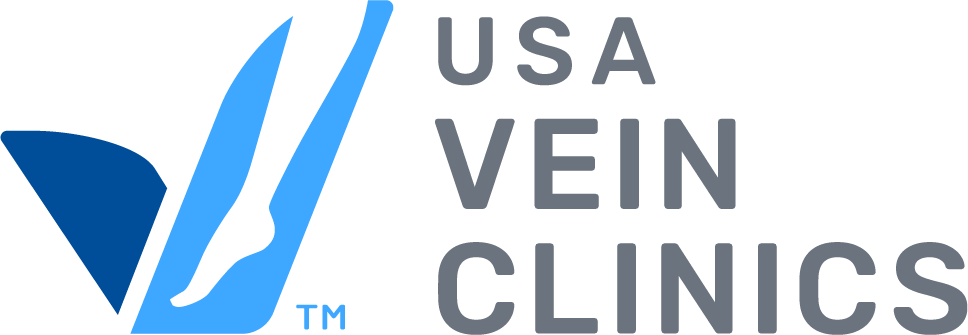Frequently Asked Questions about Venous Insufficiency (Vein Disease)
We know you have questions about vein disease and we have answers. See below.
-
What is Vein Disease?
-
Vein disease, also known as venous insufficiency, occurs when the veins in your legs struggle to send blood back to your heart. This can lead to symptoms like varicose veins, spider veins, swelling, pain, and leg ulcers.
-
What Causes Vein Disease?
-
Vein disease is often caused by weakened or damaged valves in the veins, which can be due to factors such as aging, genetics, pregnancy, prolonged standing or sitting, and obesity.
-
What Are Symptoms of Vein Disease?
-
Symptoms can include visible varicose or spider veins, aching or heavy legs, swelling, throbbing, burning, cramping, itching, and skin changes like discoloration or ulcers.
-
Is Vein Disease Serious?
-
While vein disease can be uncomfortable and affect quality of life, it can also lead to more serious complications like blood clots (deep vein thrombosis), leg ulcers, and chronic pain if left untreated.
-
What are the signs and symptoms of varicose and spider veins?
-
Leg pain or cramping, restless legs especially at night, a feeling of heaviness or soreness, tenderness around veins, itching or burning, swelling of the legs or ankles, skin discoloration, or non-healing wounds.
-
What are venous ulcers and how do they develop?
-
Venous ulcers are caused by blood pooling within the legs due to malfunctioning vein valves, this is also called venous insufficiency. Venous ulcers are wounds on the leg or ankle that is caused by damaged veins.
Vein Disease Questions
-
Can Vein Disease Be Prevented?
-
While you can’t always prevent vein disease, you can reduce your risk by maintaining a healthy weight, exercising regularly, elevating your legs, avoiding prolonged standing or sitting, and wearing compression stockings if recommended by your doctor.
Diagnosis & Treatment
-
How long does the EVLT procedure take?
-
The EVLT (Endovenous Laser Therapy) procedure itself usually takes about 15 minutes. Please allow a few minutes to prepare and a few minutes to change after the procedure. And then you can resume your normal activities right away.
-
Can I resume normal activities after my treatment?
-
Yes, you can resume your normal daily activities, drive and even return to work immediately after treatment.
Insurance Coverage
-
Is treatment covered by insurance?
-
Many treatments for vein disease are covered by insurance, especially if they are deemed medically necessary. Cosmetic treatments, like those for spider veins, may not be covered.
-
Can vein disease reoccur after treatment?
-
While treatment is often highly effective, there is a possibility of recurrence, especially if underlying risk factors are not managed. Regular follow-up with a vein specialist can help monitor and manage any recurrence.
Vein Treatment Questions
-
What lifestyle changes can help manage vein disease?
-
Regular exercise, maintaining a healthy weight, elevating your legs, avoiding prolonged standing or sitting, and wearing compression stockings can help manage symptoms and prevent progression.
-
How effective are non-surgical treatments for vein disease?
-
Non-surgical treatments like sclerotherapy, EVLT, and RFA are highly effective in treating varicose veins and other symptoms of vein disease with minimal downtime and discomfort.
Commonly Asked Questions for Future Patients
-
How can I prevent varicose veins?
-
Unfortunately there is no way to completely prevent the development of varicose veins. However, there are things you can do to improve your circulation and overall health. Some of these steps include: exercising, maintaining a healthy weight, eating well, elevating your legs, and making sure to adjust your sitting or standing positions regularly.
-
Can varicose veins go away without treatment?
-
There are measures you can take to decrease the uncomfortable symptoms of varicose veins or prevent them from becoming worse, but they will not go away without treatment. Varicose veins are a symptom of venous insufficiency, which is an underlying condition that requires treatment.
-
How do you prevent varicose veins if you have a job that requires standing all day?
-
Wearing supportive shoes, taking short breaks from standing, performing ankle rotations, remembering to stretch and flex your calves throughout the day, taking short walks at lunch, limiting saturated fats, avoiding cigarettes, and drinking lots of water can help improve circulation and decrease your risk for varicose veins if your job requires standing during the day.
-
What is restless leg syndrome?
-
When there is an urge or need to move your legs to stop unpleasant sensations, that an be a sign of poor circulation that’s typical for vein disease.
